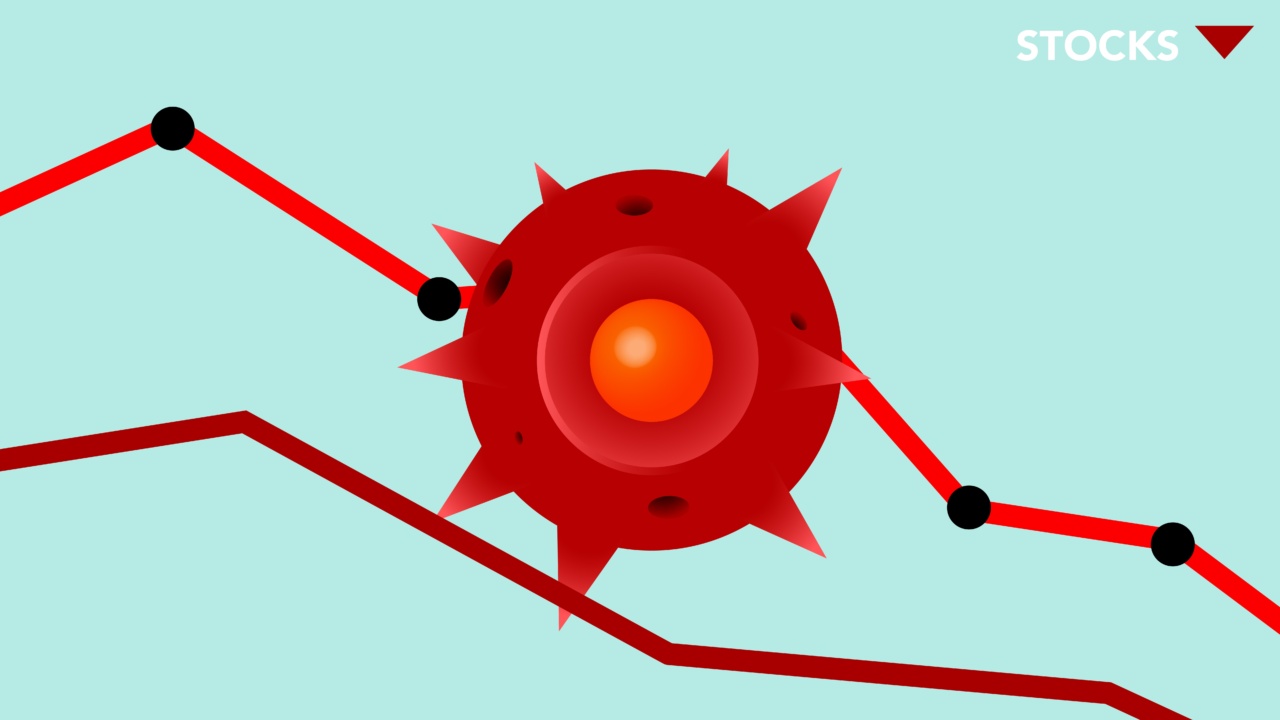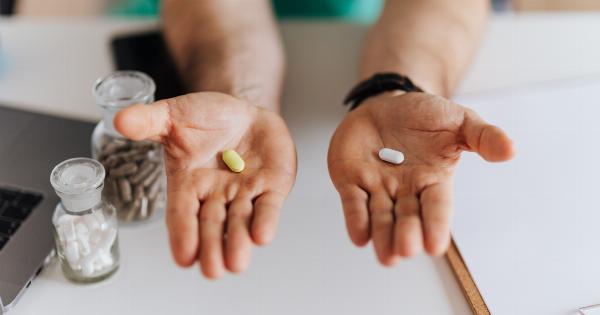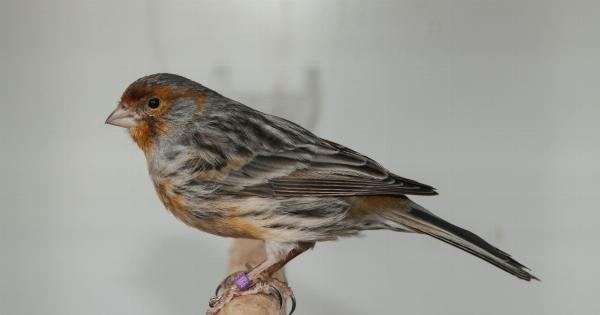Glaucoma is a condition that affects the eyes and can lead to vision loss if left untreated. It occurs when the optic nerve, which is responsible for carrying visual information from the eye to the brain, becomes damaged.
While there is no cure for glaucoma, there are several medications available that can help reduce the risk of developing the condition or slow down its progression. In this article, we will explore 30 popular medications that can be used to mitigate the risk of glaucoma.
1. Latanoprost
Latanoprost is a prostaglandin analog that is commonly used to treat glaucoma. It works by lowering the intraocular pressure (IOP) in the eye, which is a major risk factor for developing glaucoma.
By reducing the pressure inside the eye, latanoprost helps to prevent damage to the optic nerve and can slow down the progression of the disease.
2. Timolol
Timolol is a beta-blocker that is often prescribed to lower IOP in patients with glaucoma. It works by reducing the production of aqueous humor, the fluid that fills the front part of the eye.
By decreasing the amount of fluid in the eye, timolol helps to alleviate the pressure on the optic nerve and reduce the risk of glaucoma.
3. Brimonidine
Brimonidine is an alpha-2 adrenergic agonist that is used to lower IOP in patients with open-angle glaucoma or ocular hypertension.
It works by decreasing the production of aqueous humor and increasing its outflow, thereby reducing the pressure inside the eye. Brimonidine is available in eye drop form and is typically used multiple times a day.
4. Dorzolamide
Dorzolamide is a carbonic anhydrase inhibitor that is often prescribed as an adjunctive therapy for patients with glaucoma. It works by reducing the production of aqueous humor, thus lowering the IOP.
Dorzolamide is commonly used in combination with other glaucoma medications to enhance their effectiveness.
5. Travoprost
Travoprost is a prostaglandin analog similar to latanoprost. It is known for its ability to effectively reduce IOP and is often used as a first-line treatment for glaucoma.
Travoprost eye drops are typically used once daily and can help to prevent further damage to the optic nerve.
6. Bimatoprost
Bimatoprost is another prostaglandin analog that is used to reduce IOP in patients with glaucoma. It works by increasing the outflow of aqueous humor from the eye, thereby lowering the pressure on the optic nerve.
Bimatoprost is available in eye drop form and is typically used once daily.
7. Apraclonidine
Apraclonidine is an alpha-2 adrenergic agonist that is used to lower IOP in patients with glaucoma. It works by reducing the production of aqueous humor and increasing its outflow.
Apraclonidine is typically used in combination with other glaucoma medications to provide optimal IOP control.
8. Acetazolamide
Acetazolamide is a carbonic anhydrase inhibitor that is sometimes prescribed to lower IOP in patients with glaucoma. It can be taken orally or used as eye drops, depending on the severity of the condition.
Acetazolamide works by reducing the production of aqueous humor and is often used in combination with other glaucoma medications.
9. Betaxolol
Betaxolol is a beta-blocker that is commonly used to lower IOP in patients with glaucoma. It works by reducing the production of aqueous humor and is typically used once or twice daily. Betaxolol is available in both eye drop and oral tablet form.
10. Pilocarpine
Pilocarpine is a cholinergic agonist that is used to lower IOP in patients with glaucoma. It works by constricting the pupils and increasing the outflow of aqueous humor from the eye.
Pilocarpine is available in eye drop form and is typically used multiple times a day.
11. Brinzolamide
Brinzolamide is a carbonic anhydrase inhibitor that is used to lower IOP in patients with glaucoma. It works by reducing the production of aqueous humor and is often used in combination with other glaucoma medications.
Brinzolamide is available in eye drop form and is typically used multiple times a day.
12. Methazolamide
Methazolamide is another carbonic anhydrase inhibitor that is used to lower IOP in patients with glaucoma. It works by reducing the production of aqueous humor and is typically used in combination with other glaucoma medications.
Methazolamide can be taken orally or used as eye drops.
13. Dipivefrin
Dipivefrin is a sympathomimetic agent that is used to lower IOP in patients with glaucoma. It works by decreasing the production of aqueous humor and increasing its outflow.
Dipivefrin is available in eye drop form and is typically used multiple times a day.
14. Levobunolol
Levobunolol is a non-selective beta-blocker that is used to lower IOP in patients with glaucoma. It works by reducing the production of aqueous humor and is typically used once or twice daily. Levobunolol is available in eye drop form.
15. Carteolol
Carteolol is another non-selective beta-blocker that is commonly used to lower IOP in patients with glaucoma. It works by reducing the production of aqueous humor and is typically used once or twice daily. Carteolol is available in eye drop form.
16. Betaxolol
Betaxolol is a selective beta-blocker that is used to lower IOP in patients with glaucoma. It works by reducing the production of aqueous humor and is typically used once or twice daily. Betaxolol is available in eye drop form.
17. Echothiophate Iodide
Echothiophate iodide is a cholinesterase inhibitor that is used to lower IOP in patients with glaucoma. It works by enhancing the outflow of aqueous humor from the eye.
Echothiophate iodide is available in eye drop form and is typically used once or twice daily.
18. Dorzolamide/Timolol
Dorzolamide/timolol is a combination medication that contains both a carbonic anhydrase inhibitor (dorzolamide) and a beta-blocker (timolol). It is used to lower IOP in patients with glaucoma and is typically used twice daily.
Dorzolamide/timolol is available in eye drop form.
19. Flurbiprofen
Flurbiprofen is a nonsteroidal anti-inflammatory drug (NSAID) that is sometimes prescribed to lower IOP in patients with glaucoma. It works by reducing inflammation in the eye and can help to alleviate the pressure on the optic nerve.
Flurbiprofen is available in eye drop form and is typically used multiple times a day.
20. Ketorolac
Ketorolac is another NSAID that is commonly used to reduce inflammation and lower IOP in patients with glaucoma. It is available in eye drop form and is typically used multiple times a day.
21. Prednisolone
Prednisolone is a corticosteroid that is sometimes prescribed to reduce inflammation in the eye and lower IOP in patients with glaucoma. It is available in eye drop form and is typically used multiple times a day.
22. Fluticasone
Fluticasone is a corticosteroid that is used to reduce inflammation and lower IOP in patients with glaucoma. It is available in eye drop form and is typically used multiple times a day.
23. Triamcinolone
Triamcinolone is another corticosteroid that is commonly used to reduce inflammation and lower IOP in patients with glaucoma. It is available in eye drop form and is typically used multiple times a day.
24. Fluorometholone
Fluorometholone is a corticosteroid that can be used to reduce inflammation and lower IOP in patients with glaucoma. It is available in eye drop form and is typically used multiple times a day.
25. Brimonidine/Timolol
Brimonidine/timolol is a combination medication that contains both an alpha-2 adrenergic agonist (brimonidine) and a beta-blocker (timolol). It is used to lower IOP in patients with glaucoma and is typically used twice daily.
Brimonidine/timolol is available in eye drop form.
26. Latanoprostene Bunod
Latanoprostene bunod is a prostaglandin analog that is used to lower IOP in patients with glaucoma. It works by increasing the outflow of aqueous humor from the eye. Latanoprostene bunod is available in eye drop form and is typically used once daily.
27. Netarsudil
Netarsudil is a rho kinase inhibitor that is used to lower IOP in patients with glaucoma. It works by increasing the outflow of aqueous humor from the eye. Netarsudil is available in eye drop form and is typically used once daily.
28. Tafluprost
Tafluprost is another prostaglandin analog that is used to reduce IOP in patients with glaucoma. It works by increasing the outflow of aqueous humor from the eye. Tafluprost is available in eye drop form and is typically used once daily.
29. Ripasudil
Ripasudil is a rho kinase inhibitor that is used to lower IOP in patients with glaucoma. It works by relaxing the muscles in the eye and increasing the outflow of aqueous humor. Ripasudil is available in eye drop form and is typically used twice daily.
30. Travoprost/Timolol
Travoprost/timolol is a combination medication that contains both a prostaglandin analog (travoprost) and a beta-blocker (timolol). It is used to lower IOP in patients with glaucoma and is typically used once daily.
Travoprost/timolol is available in eye drop form.





























